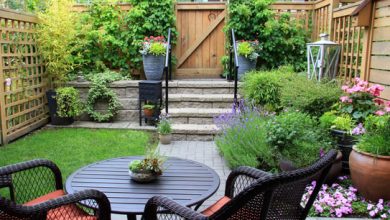Complete Guide to Learn to Plant Palm Trees [Step by Step]

The Palm treesThey are tropical plants of great size and popularity throughout the world.
There are varieties for outdoors, others that withstand the driest and most arid climates, storms by the sea and there are also those that prefer the peace of a home where they are understood, with simple care that will save palm diseases.
Important points when planting palm trees
- When? They should be planted in spring or summer.
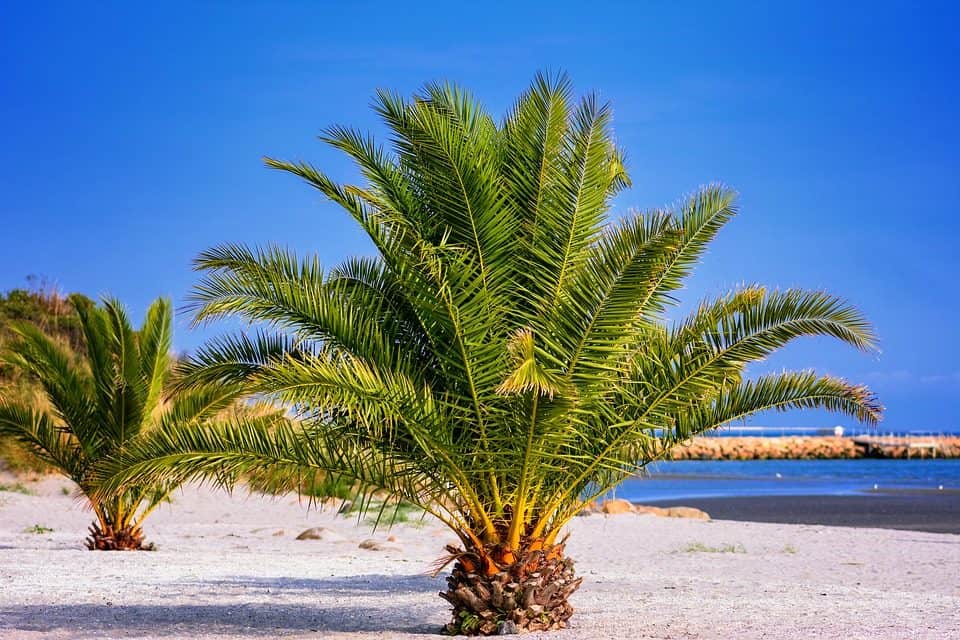
- Where to plant them? In warm or tropical climates, where they have direct sun.
- Ideal temperature? 25°C
- How do we prepare the land? Well-drained, neutral, nutrient-rich soils are ideal.
- How do we water? Frequently newly planted and very soon after.
- Plagues and diseases? They are very resistant but the plague.
When to plant palm trees?
 The majorityare lovers of direct sunlightAnd if they are in privileged spaces of your house to highlight decorations, do not forget that they also need a lot of natural light there.
The majorityare lovers of direct sunlightAnd if they are in privileged spaces of your house to highlight decorations, do not forget that they also need a lot of natural light there.
It will be enough to keep it near a window and give it little watering so that it does not grow fungus or rot its roots.She will not demand anything else.
If you decided to buy it in a pot, the palm tree can actually be planted at any time of the year, but try to avoid doing it at the time of greatest winter cold or in the hottest summer.
But if you buy one that was recently dug out of the ground and comes with a root ball attached to its roots, it’s best to plant in spring or summer, because palms need a high temperature for their roots to multiply.
Where to plant palm trees?
The Palm treesundoubtedly prefer warm climates,Mediterranean air is very good for them, with moderate frosts that they can withstand.
 They are very susceptible to changes in temperature in winter and can withstand one frost, but two or more will inevitably affect their root activity and make them much more vulnerable to disease attacks.
They are very susceptible to changes in temperature in winter and can withstand one frost, but two or more will inevitably affect their root activity and make them much more vulnerable to disease attacks.
That is why they are better adapted to temperate or hot climates.An ideal temperature is around 25 °C.
Hardly a tropical landscape lacks palm trees. But when we want to have a house, it is very convenient to know which variety suits us best.
In general terms, there are palm trees from warm climates, capable of withstanding low temperatures that range between -5 to -13 °C.
And there is a wide variety of species ranging in size (small, medium or large) and from hot or cold climates. Choose the one that suits you best and if you are going to have it planted in a pot, try not to mistakenly sell any of the ones that can grow up to 15 meters in height, please.
How do we prepare the land for growing palm trees?
In truth, although palm trees generally adapt to any type of soil, it is advisable to prevent the substrate from becoming saturated and avoid excess lime.
How do we water palm trees?
Up to two years of life, it is highly recommended to water the palm tree quite frequently, so that it can settle well and fully develop. But later she will be able to sustain herself with little irrigation and rainwater.
We cannot forget that palm trees will tend to need more water if they live in sandy soil, because it is much drier than clay.
Did you know…There are some varieties that are super resistant to times of drought. The so-called palmettos (Chamaerops humilis), for example, are located in the western Mediterranean fringe and consume almost no water.
But roughly,the irrigation system is very simpleand really nothing demanding. A young plant should be watered daily during the first weeks of root establishment, then it is spaced out and watering will be weekly until it decreases in adulthood.
How to plant palm trees step by step?
Planting a palm tree requires taking into account certain considerations that will help you lead a healthy life in our garden. So let’s see what we have to do.
- Dig a large, wide hole, covering the crown of the palm tree. It is fine if you achieve these measurements: 15 cm more width on each side and another 15 cm more than the length of the plant chaplain.
- The substrate that we prepare must be made up of the earth that we remove and organic fertilizer. Manure, peat moss, compost or mulch are excellent.
- Sometimes filling the hole with washed construction sand gives the plant more firmness and prevents it from being propped up with the help of timbers.
- You can also build a kind of earth barrier around the hole, with the idea of retaining water for the newly planted palm tree, in order to prevent the roots from hardening.
- When the palm tree is very large, it is necessary to create a support for it with ropes or struts made with sticks placed diagonally, embedded in the ground and leaning or resting on the trunk, without damaging it.
- An effective technique to guarantee a healthy development of the palm tree is to wrap its leaves, keeping them tied for six months to a year, immediately after it is transplanted. This is done to prevent leaf shedding while it adjusts to its new environment.
- These leaves are released if we observe that the ends show through the wrapping. It then means that it has taken root and that we can now release it.
- After having planted it, it should not be fertilized for 6 to 8 weeks, because it can get stressed since it is in the process of adapting to the new environment that we assign it.
The most successful method of propagating palm trees is by seed, but it is also done by dividing the clump; by suckers and air layering.
Important points when watering palm trees:
- Irrigation frequency: whenever the substrate is half dry or completely dry.
- Irrigation method: localized with a hose or a watering can (depends on where you are).
- Optimum time of day for watering: early in the morning, before the sun warms up.
- Identify excess water: puddles of water in the substrate, yellowing leaves, pests and diseases.
- Identify lack of water: dry land, decay of its leaves, death of the plant.
watering palm trees
su_box title=”Important points when watering palm trees:” box_color=”#006f0c” title_color=”#ffffff” radius=”1″]
- Irrigation frequency: whenever the substrate is half dry or completely dry.
- Irrigation method: localized with a hose or a watering can (depends on where you are).
- Optimum time of day for watering: early in the morning, before the sun warms up.
- Identify excess water: puddles of water in the substrate, yellowing leaves, pests and diseases.
- Identify lack of water: dry land, decay of its leaves, death of the plant.[/su_box]
What irrigation needs do palm trees have?
Watering is one of the most important aspects of having palm trees, so it is not surprising that they have special needs in this regard. You should not get carried away by the idea that this species can live without water, since they love to have enough moisture to be able to develop.
Taking this into account, it is important to indicate that it is much better if you use warm rainwater or water without the presence of lime for irrigation. This way you will favor the growth and good development of your plant, both indoors and outdoors.
We can also say that palm trees prefer constant watering during their vegetative activity, and may be more spaced during the winter. Similarly, in summer, it is convenient to protect the plant from excessive sun and excessive evaporation of water, applying larger amounts.
How can we detect lack of irrigation in palm trees?
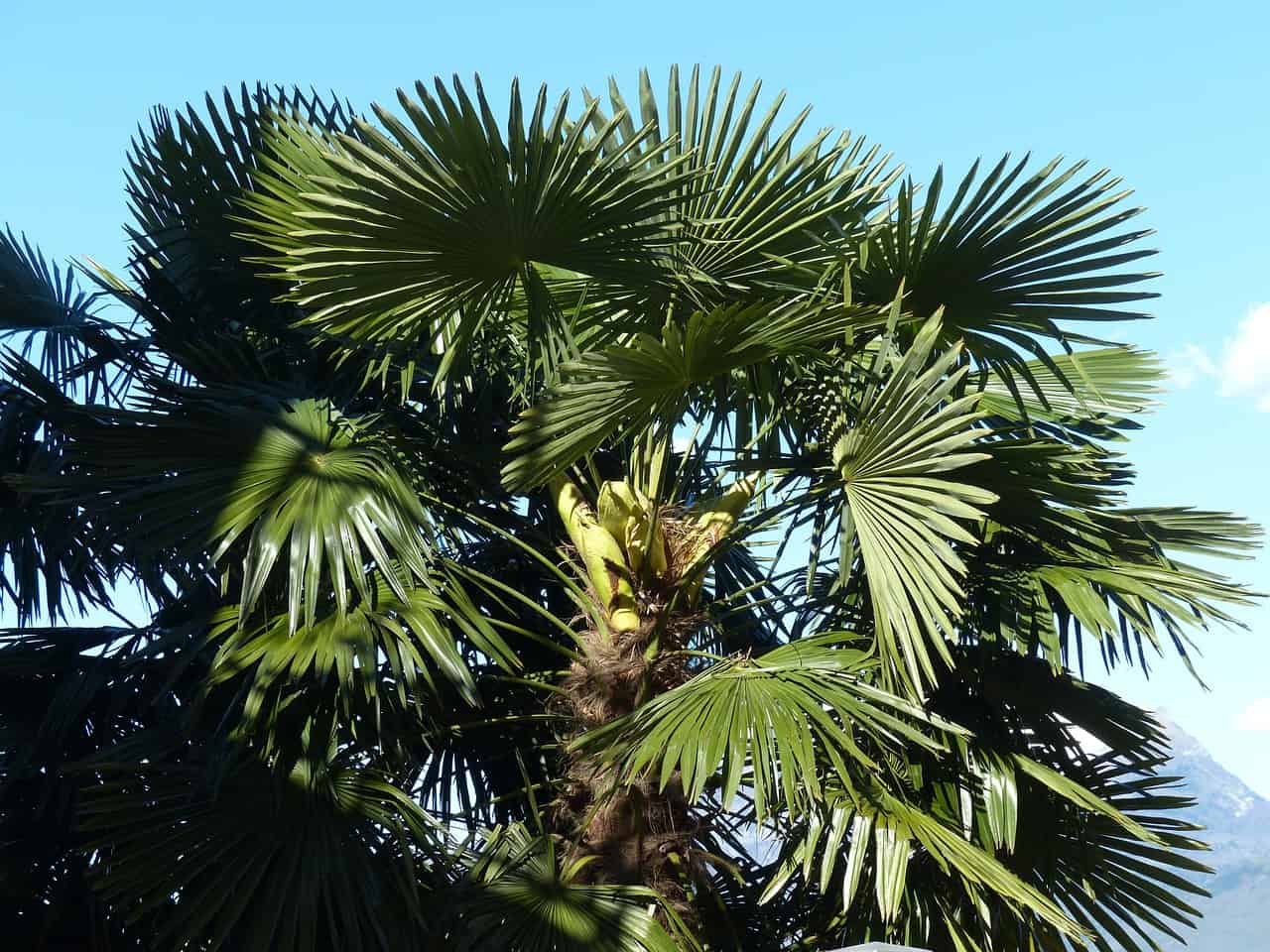
As in most plants, dry substrate is one of the first signs of lack of irrigation in a plant, especially if it is a palm tree.
Consider that this species needs to maintain humidity, making it essential that you use a humidity meter to facilitate care.
The decay of the leaves is another sign of lack of water, since it will not have strength in its stems to keep them firm. On the other hand, the lack of irrigation can put the plant at great risk, because the root ball must not dry out or it will lead to death.
How often should we water the palm trees?
Depending on what season you are in, the watering time and amount of water will vary.During the summer, it is convenient to water them once or twice a week, depending on the site where the specimen is located.
Indoors, water evaporation is less, making once a week enough. While outdoors and with well-draining soil, twice a week will be adequate so as not to lose adequate moisture for the palm tree.
In winter, watering should be more spaced, reaching between 15 and 30 days, because the heat is less and the humidity increases. However, the determining point that you must take into account to water or not is the dryness of the land.
This is without a doubt the signal that will let you know when it is correct, regardless of the season or the location of the plant. For this reason, we advise you to always review this point, promoting the health and good appearance of your dog.
What is the best way to water palm trees?
The correct way to water a palm tree is directly to the substrate, without letting the water touch the leaves, to avoid any damage from the sun or pests.
For this, it is correct to use a garden watering can for indoor plants and a hose for outdoor plants, facilitating the process.
How do we detect excess water in palm trees?
Even though palm trees tend to love having water and humidity, going to extremes is not convenient for their development. This is because excess irrigation promotes the proliferation of fungi and diseases, both in the roots and in other parts.
A clear indication of this is when puddles are created in the soil when watering or the saucer is left under the pots after watering. If these conditions continue for a long time, the leaves of the palm tree will turn yellow and weak.
The roots will tend to rot, causing the entire plant to collapse.
Palm trees are ideal plants for decorating gardens, terraces and interiors, due to their appearance and the freshness they provide. It is necessary to be careful with them, especially when offering them the right amount of irrigation so that they can live.
What favorable associations do they have?
There are many varieties of palm trees,depending on whether they are warm or rather cold.
Among the most popular are:
Canary Palm; Florida; excellent; Walnut Palm; blue or gray; Sugar Palm; Guadeloupe Palm; Fishtail Palm; Areca; Rizada, and Palmera Princesa, among many others of great showiness.
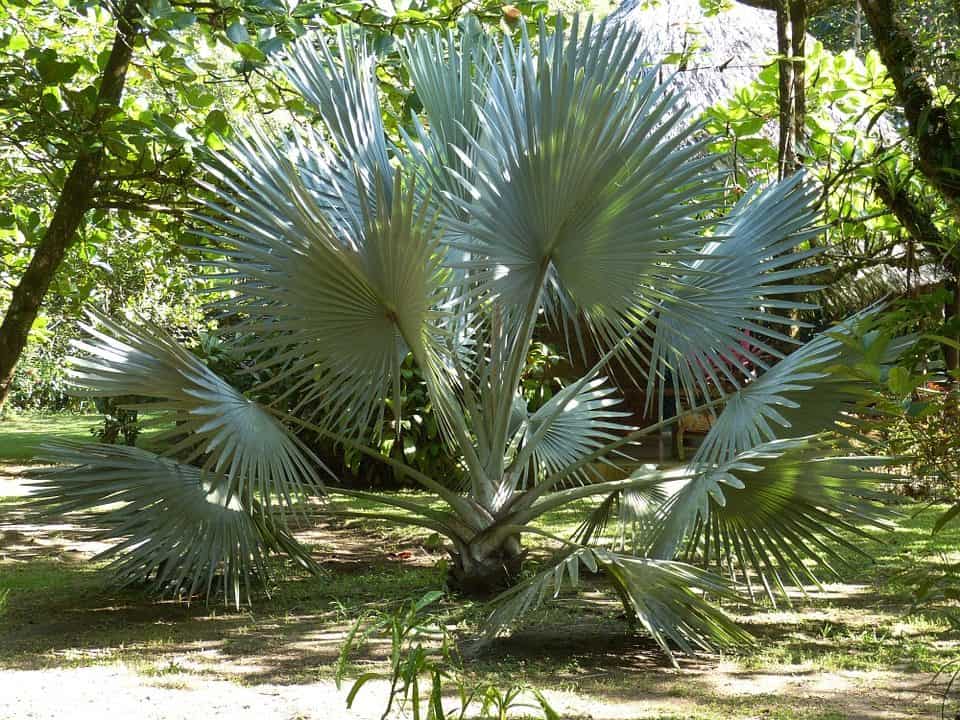 With the help of a specialist gardener, you will be able to choose the palm that best suits your climate. For example, the popular Canarian Palm tree is 100% Mediterranean.
With the help of a specialist gardener, you will be able to choose the palm that best suits your climate. For example, the popular Canarian Palm tree is 100% Mediterranean.
Palm trees in large gardens can form exotic combinations, serving as background companions for flower crops.
En verdad puede ser increíble combinar, en medio de un jardín amplio, la Palma de Sagú, junto a la Cycas Revoluta, originaria del sur de Japón (llamada también palma de iglesia o King sago) junto a flores multicolores perennes que las circunden como peonías blancas, rojas y amarillas.
En España, para jardinería se cultiva mucho el Phoenix dactylifera para amplios espacios verdes donde pueda alcanzar su esplendor máximo de unos 20 metros de altura y un tronco con un diámetro de unos 30 a 50 cms. Se la ve mucho en emplazamientos litorales como la ciudad valenciana de Alicante.
Otro arreglo fabuloso consiste en sembrar al pie de una Palmera Sago en jardín o maceta, muchas begoñas o la perenne Flox Paniculada.
O combinar en jardines playeros Palmeras de coco y Uvas de playa, donde las primeras ponen la altura y la elegancia y las segundas olor y textura gracias al color violáceo que adquieren sus hojas redondeadas y flores y racimos de uva que aportan un festival visual maravilloso.
La palmera canaria se asocia muy bien con hogueras, plataneras y hasta con laurel. Inclusive con el eucalipto se lleva muy bien. Pero no se debe plantar nunca cerca de granados, limoneros, naranjos, olivos y alcachofas.
What pests and diseases affect palm trees?
One of the most lethal pests for the palm tree is the red palm weevil, a beetle of Asian origin with a reddish appearance that reaches a size of about 5 cm, more than enough to wreak havoc on the plant.
The red palm weevil can pierce the trunks of coconut and palm trees, making its way to lengths of up to a meter that it perches very easily.
It takes advantage of the wounds left by pruning on the leaves and trunk and embeds itself there to advance in its destructive path.
The first symptom of illnessIt is the yellowish color of the palm leaves.
El tratamiento a seguir incluye pulverizaciones foliares e inyecciones o endoterapia, mediante cirugía vegetal, eliminando partes dañadas o que se han podrido por la acción del animal.
Y debe aplicarse también tratamiento preventivo con pulverizaciones durante todo el año. Este escarabajo es muy persistente en la época de calor, que es cuando más virulento se pone.
Hay algo especial que caracteriza a las palmeras y que hace que queramos tener unas cuantas sembradas en el jardín ¿o no?
Tal vez sea su belleza, su altura o el ambiente tropical que crean, abonarlas será un acto de amor que te traerá muchos beneficios.
Estas son plantas de mucha resistencia y que apenas exigen cuidados. Es que son capaces de crecer hasta en suelos pobres.
Pero cuando te decides a darles una dosis planificada de abono, tendrás una palmera de ensueño y aquí te vamos a contar cómo conseguirlo ¿lo vemos?
¿Por qué es importante abonar las palmeras?
El objetivo ideal de tener una palmera es que esta crezca unos cuantos metros de altura y se establezca como la vemos en las postales.Abonarlas ayudará a que ese ideal lo alcances más rápido porque por medio del abono recibirá los nutrientes para acelerar sus procesos internos.
Esto implica: aumentar el tamaño, fortalecer el follaje, darle brillo y mucha más resistencia ante los posibles problemas que surjan con el entorno.En este último punto se cuentan situaciones como: ráfagas de viento, lluvias torrenciales, ataque de plagas o enfermedades, entre otros.
Así que abonarlas, más que una exigencia que ellas hacen, es un acto de cuidado que merecen.
¿Cada cuánto debemos abonar las palmeras?
El proceso de abonado lo tendrás que planificar en función a las condiciones propias del suelo donde las tengas sembradas.
Suelos arcillosos
 Estos tienen la capacidad de retener por más tiempo el agua y, por ende, los nutrientes. De esta forma, las palmeras podrán aprovechar mejor los abonos que apliques.
Estos tienen la capacidad de retener por más tiempo el agua y, por ende, los nutrientes. De esta forma, las palmeras podrán aprovechar mejor los abonos que apliques.
Si tienes tus palmeras sembradas en un suelo de esta naturaleza, con un abono al año entre la primavera y el verano será más que suficiente.
Suelos arenosos
 En este caso, el suelo tiende a filtrar con más rapidez el agua de riego y con eso se lava también el sustrato provocando la pérdida de nutrientes.
En este caso, el suelo tiende a filtrar con más rapidez el agua de riego y con eso se lava también el sustrato provocando la pérdida de nutrientes.
Si es tu caso, el proceso de abono tendrás que ejecutarlo en varias ocasiones, planificando al menos 1 durante la temporada primaveral y 1 más en verano.
¿Qué nutrientes necesitan las palmeras?
El principal nutriente que le hace falta a las palmeras es el nitrógeno (N) que será el que le ayudará a crecer con más rapidez y mantener las hojas y partes verdes muy saludables.
El potasio (K) y el fósforo (P) también forman parte de los nutrientes principales, aunque su función se orientará al fortalecimiento de la estructura y de las raíces. Para asegurar que todo marche como es debido, asegura que también posea un equilibrio de micronutrientes.
Estos los puedes añadir en conjunto con el abono que elijas y que, en la gran mayoría de los casos, viene incluido.
¿Qué tipo de abonos necesitan las palmeras?
La buena noticia con las palmeras es que las oportunidades de abonos que resultan útiles para ellas son numerosas.
Veamos algunos tipos que puedes aprovechar:
- El abono orgánico casero: es una fuente muy útil de nutrientes y lo puedes hacer en casa sin gastar ni un solo euro. La base está en el estiércol, el compost, el humus, entre otros. Estos son abonos ricos en nitrógeno, por lo que cubrirás todas las exigencias que tiene la planta en esta materia. Además, tiene la propiedad de contribuir a la sostenibilidad del suelo, por lo que son de alto valor ecológico.
- El abono mineral: este es un abono que da ventaja en torno a las cantidades de nutrientes que puedes aplicar en cada proceso, ya que vienen formulados por la metodología NPK. Lo mejor es elegir una versión que también contenga micronutrientes para asegurar que todos los requerimientos sean cubiertos.
En algunos casos, los cultivadores de palmeras apuestan por mejorar las condiciones del cultivo realizando un abonado doble cada año.Esto es, aportando abono orgánico casero y abono mineral en distintas épocas para que las plantas estén mucho más fortalecidas.
¿Cómo preparamos abono para las palmeras?
 La preparación de cada uno de los abonos descritos en el punto anterior los aplicarás según las recomendaciones que te daremos a continuación.
La preparación de cada uno de los abonos descritos en el punto anterior los aplicarás según las recomendaciones que te daremos a continuación.
El abono orgánico casero tendrás que suministrarlo abriendo un agujero en el entorno de la planta, cavando hasta un máximo de 5 centímetros.
Esta altura impedirá que las raíces que están más altas se vean perjudicadas por la acción humana.
Coloca por cada planta un pro

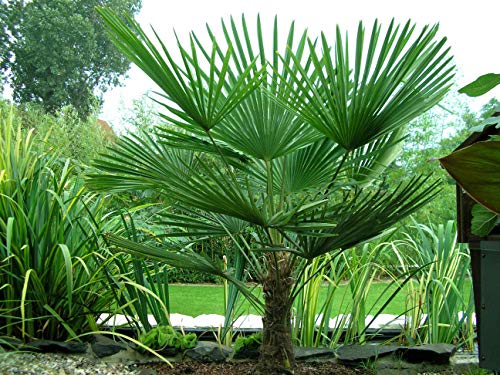

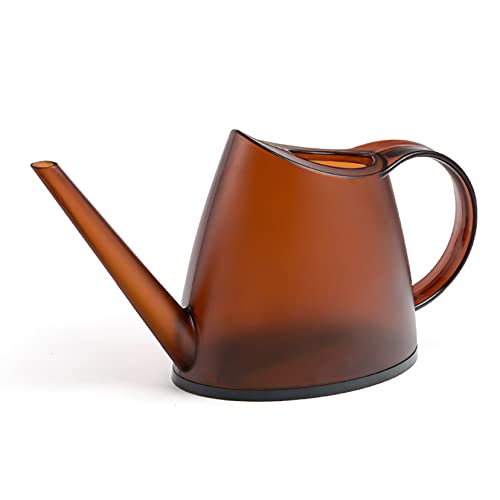

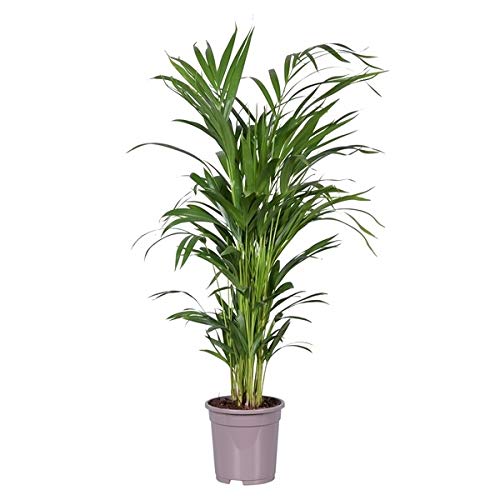
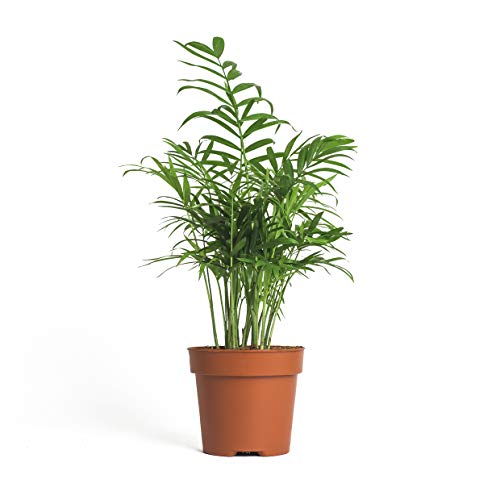

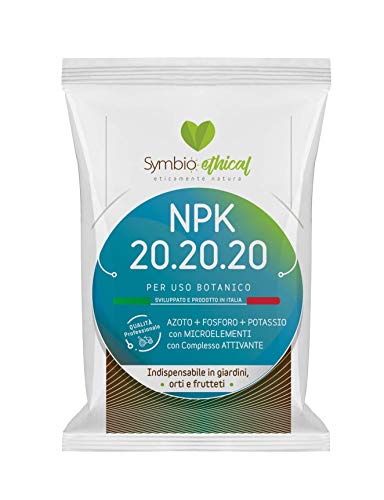
![Photo of Celandine: [Cultivation, Irrigation, Care, Pests and Diseases]](https://www.complete-gardening.com/wp-content/uploads/2021/06/celidonia_1619476633-390x220.jpg)
![Photo of How to Plant Peanuts in your Garden: [Complete Guide + Images]](https://www.complete-gardening.com/wp-content/uploads/2022/08/how-to-plant-peanuts-in-your-garden-complete-guide-images-390x220.jpg)
![Photo of Wormwood: [Cultivation, Irrigation, Care, Pests and Diseases]](https://www.complete-gardening.com/wp-content/uploads/2021/06/Ajenjo-390x220.jpg)
